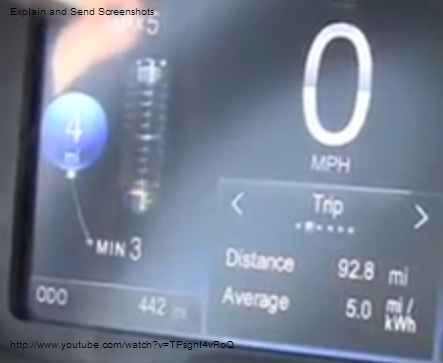JupiterRed said:
Question for Tony.
Do you have a thread that show just your data on the B ED in terms of consumption and range? I'm getting lost in this particular thread.
Not sure exactly what you are looking for, so here's some other posts:
Both cars use 2900ma Panasonic 18650 cells.
-------------------- RAV4 ----------- B-Class
Capacity ---------47.0kWh(est)---- 35.9kWh
Extended ---------41.8kWh -------- 31.5kWh
Normal -----------35.0kWh --------- 28.0kWh
Cells ----------------4800(est)------ 3696
Modules ------------- 12 ------------- 12
Cells per module ---- 400(est) ------ 308
Max cell volt -------- 4.2v --------- 4.2v(est)
Resting max cell --- 4.15v -------- 4.15v(est)
Resting pack max--- 382v ---------- 365v
Minimum cell ------- 2.5v ----------- 2.5v
Range max/ 65mph - 142 ---------- 113
Consumption --------- 3.4 ---------- 3.6 (with 1.2 correction factor, 3.0 on dash)
The Panasonic published voltage range 4.2v to 2.5v, which is 3.35v average.
3.35v * 2900ma * 3696 cells = 35.9kWh for the B-Class ED
Longest Range Pointers
1)
Drag - Wind resistance - high elevation and hot ambient temperatures thin the air, making it easier for any object to pass through the air. In the airplane business, we call this calculation "density altitude". Here's an easy to use online version: http://wahiduddin.net/calc/calc_da.htm. The most "
aerodynamic" vehicle will cut through the air with the least resistance.
2)
Drag - Rolling resistance - drag from everything that rotates to move the car; tires, wheel bearings, u-joints or cv-joints, gears and bearings, gear lubricant. Generally, the hotter the lubricant, the lower its resistance; the higher the tire air pressure, the lower the tire resistance.
3)
Gravity and Mass equals Weight - as long as there is gravity, it will take energy to accelerate mass and energy to propel mass at speed. Obviously, it also takes significantly more power to lift the mass away from the gravitational pull while driving uphill.
Quite simply, lighter is better.
4)
Ideal speed - every vehicle has a speed where the intersection of the power required to overcome drag and weight is the least. Heavy cars with high drag tires (but extremely aerodynamic) like a Tesla tend to be most ideal in the 20-25mph range and small, lower mass cars like LEAF and Spark EV are probably in the 10-15mph range. Obviously, anything that uses power that isn't being used to overcome drag and weight is a waste; the heater, a/c, etc.
5)
Hot batteries store more energy - the hotter the better, however, this same heat tends to significantly shorten their life (Nissan LEAF in Phoenix) and in some cases (Boeing 787), make the battery fail.
That's it! Hit the ideal speed, at the lowest weight with the least drag and the most stored energy!!!!





